The Lost Continent
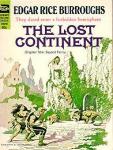
The Lost Continent is one of the least-known of Burroughs' thrilling science-fiction tales. In the year 2137, civilization has been in decline for nearly two centuries, and war-torn Europe is but a distant memory to the inhabitants of the isolated United States. But an American adventurer rediscovers the Old World, which has become a strange and savage land.
Related Books
-
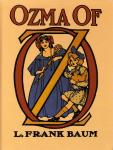 Ozma of OzL. Frank Baum
Ozma of OzL. Frank Baum -
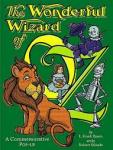 The Wonderful Wizard of OzL. Frank Baum
The Wonderful Wizard of OzL. Frank Baum -
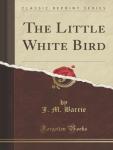 The Little White BirdJ. M. Barrie
The Little White BirdJ. M. Barrie -
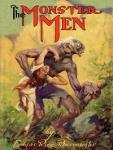 The Monster MenEdgar Rice Burroughs
The Monster MenEdgar Rice Burroughs -
 The Lost ContinentEdgar Rice Burroughs
The Lost ContinentEdgar Rice Burroughs -
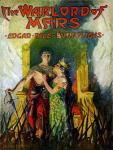 The Warlord of MarsEdgar Rice Burroughs
The Warlord of MarsEdgar Rice Burroughs -
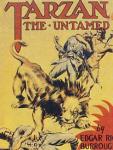 Tarzan the UntamedEdgar Rice Burroughs
Tarzan the UntamedEdgar Rice Burroughs -
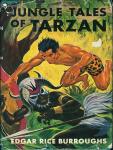 Jungle Tales of TarzanEdgar Rice Burroughs
Jungle Tales of TarzanEdgar Rice Burroughs
Author other works
-
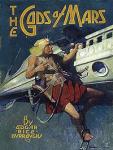
The Gods of Mars
Edgar Rice Burroughs
This book is a 1918 Edgar Rice Burroughs science fantasy novel, the second of his famous Barsoom series.At the end of the first book, A Princess of Mars, John Carter is unwillingly transported back to Earth. The Gods of Mars begins with his arrival back on Barsoom (Mars) after a ten-year separation from his wife Dejah Thoris, his unborn child, and the Red Martian people of the nation of Helium, whom he has adopted as his own. Unfortunately, Carter materializes in the one place on Barsoom from which nobody is allowed to depart: the Valley Dor, which is the Barsoomian afterlife.After John Carter's arrival, a boat of Green Martians on the River Iss are ambushed by the previously unknown Plant Men. The lone survivor is his friend Tars Tarkas, the Jeddak of Thark, who has taken the pilgrimage to the Valley Dor to find Carter. Having saved their own lives, Carter and Tars Tarkas discover that the Therns, a white-skinned race of self-proclaimed gods, have for eons deceived the Barsoomians elsewhere by disseminating that the pilgrimage to the Valley Dor is a journey to paradise. Most arrivals are killed by the beasts of Valley, and the survivors enslaved by Therns.Carter and Tars Tarkas rescue Thuvia, a slave girl, and attempt to escape, capitalizing on the confusion caused by an attack by the Black Pirates of Barsoom upon the Therns. During the attack, Tars Tarkas and Thuvia hijack a Black Pirate flier, while Carter fights his way aboard another, killing all but one of the Pirates, and rescuing a captive Thern princess. From the captured Pirate Xodar, Carter learns that the Black Pirates, called the "First Born", also think of themselves as gods, and accordingly prey upon the Therns; and additionally identifies the captive Thern as Phaidor, daughter of the "Holy Hekkador" (high priest) of the Therns. When their flier is recaptured by the First Born and taken to their realm of Omean, Carter is taken before Issus, the self-proclaimed goddess of Barsoom, who dictates the Therns through secret communications which they mistake for divine revelation.Issus takes Phaidor as a handmaiden for one Martian year; whereas Carter is imprisoned, with Xodar as his slave as punishment for being defeated by Carter. Thereafter Carter treats him with honor, and thus gains his friendship. In prison, they encounter a young man later identified as Carter's son Carthoris, with whom Carter is taken to a series of games wherein the previous year's handmaidens are eaten by Issus and her nobles. Carter leads a revolt of the prisoners, killing many of the First Born; and upon the suppression of their revolt, he and Carthoris escape via underground tunnels, and give themselves to guards unacquainted with the revolt to be returned to their prison. Upon hearing of the revolt, Xodar rejects Issus’ divinity and joins the others in escape. Upon later abandoning their aircraft, they encounter Thuvia, who describes the capture of Tars Tarkas by the green warriors of Warhoon (a clan rival to his own). Carter goes to rescue Tars Tarkas, but is discovered by his enemies. After a chase, Thuvia is sent on alone mounted while the men attempt a stand against the Warhoons. They are rescued by the Heliumetic navy but do not find Thuvia. Commanding one of the warships is Carter’s friend Kantos Kan but the fleet is commanded by Zat Arras, a Jed (chieftain) of the hostile client state of Zodanga, and Carter is suspected of returning from Valley Dor, which is punishable by death. Tardos Mors, the Jeddak of Helium, and Mors Kajak, the Jed of Hastor (the grandfather and father, respectively, of Dejah Thoris, and thus Carter’s in-laws) are absent from Helium, having led fleets in search of Carthoris. Later, Carter discovers that Dejah Thoris may have taken the pilgrimage to the Valley Dor to find him.Upon returning to Helium, Carter is tried for heresy by the Zodangans; but the people of Helium do not tolerate this, and Carter is held prisoner for 365 days until his son frees him. Thereafter he goes to rescue Dejah Thoris but is kidnapped by the Zodangans. Carter refuses Zat Arras’ offer of freedom in exchange for endorsing Zat Arras as Jeddak of Helium, and is imprisoned. After half a (Barsoomian) year, Carter escapes, and embarks to Omean, with secretly raised troop levies, ships, and soldiers lent by Tars Tarkas. Near Omean Carter is challenged first by the Therns; secondly by Zat Arras; and lastly by the First Born, whereupon Carter causes the Therns and First Born to fight one another, and the Heliumetic crews of the Zodangan fleet mutiny in support of Carter. Thereafter the Heliumites and Tharks defeat the First Born, and Issus herself is killed. But Dejah Thoris, Thuvia, and Phaidor are imprisoned in the Temple of the Sun, of whose rooms each opens only once per year. Immediately before their room closes, Phaidor attempts to kill Dejah Thoris, and her success or failure are left unknown. The story is thence continued in the third book of Burroughs’ Martian series, The Warlord of Mars.
-

The Warlord of Mars
Edgar Rice Burroughs
This book is a science fantasy novel written by Edgar Rice Burroughs, the third of his famous Barsoom series.This novel continues where the previous one in the series, The Gods of Mars abruptly ended. At the end of the previous book, John Carter's wife, the princess Dejah Thoris, is imprisoned in the Temple of the Sun by the vile pretender goddess Issus. It is said one has to wait an entire Barsoomian year before the room the prisoner is in revolves back to the entrance.John Carter discovers that a First Born knows the secret of the Temple of the Sun and he and the Holy Hekkador Matai Shang want to rescue the Holy Thern's daughter, who is imprisoned with Dejah Thoris and another Barsoomian princess, Thuvia of Ptarth. John Carter follows them in the hope of liberating his beloved wife. His antagonists flee to the north, taking the three women along. Thereafter John Carter follows them untiring into the north polar regions where he discovers more fantastic creatures and ancient, mysterious Martian races. These he overcomes in battle, and is later proclaimed "Warlord of Barsoom" by his allies. This book is the last to feature Tars Tarkas, John Carter's ally, in any major role; indeed, the green Barsoomians of whom Tars Tarkas is an oligarch disappear altogether from most of the later novels.
-
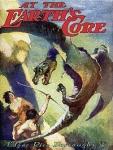
At the Earth's Core
Edgar Rice Burroughs
This is a 1914 fantasy novel by Edgar Rice Burroughs, the first in his series about the fictional "hollow earth" land of Pellucidar. The author relates how, traveling in the Sahara desert, he has encountered a remarkable vehicle and its pilot, David Innes, a man with a remarkable story to tell. David is a mining heir who finances the experimental "iron mole," an excavating vehicle designed by his elderly inventor friend Abner Perry. In a test run, they discover the vehicle cannot be turned, and it burrows 500 miles into the Earth's crust, emerging into the unknown interior world of Pellucidar. In Burroughs' concept, the Earth is a hollow shell with Pellucidar as the internal surface of that shell. Pellucidar is inhabited by prehistoric creatures of all geological eras, and dominated by the Mahars, a species of flying reptile both intelligent and civilized, but which enslaves and preys on the local stone-age humans. Innes and Perry are captured by the Mahars' ape-like Sagoth servants and taken with other human captives to the chief Mahar city of Phutra. Among their fellow captives are the brave Ghak, the Hairy One, from the country of Sari, the shifty Hooja the Sly One and the lovely Dian the Beautiful of Amoz. David, attracted to Dian, defends her against the unwanted attentions of Hooja, but due to his ignorance of local customs she assumes he wants her as a slave, not a friend or lover, and subsequently snubs him. Only later, after Hooja slips their captors in a dark tunnel and forces Dian to leave with him, does David learn from Ghak the cause of the misunderstanding. In Phutra the captives become slaves, and the two surface worlders learn more of Pellucidar and Mahar society. The Mahars are all female, reproducing parthogenetically by means of a closely guarded "Great Secret" contained in a Mahar book. David learns that they also feast on selected human captives in a secret ritual. In a disturbance, David manages to escape Phutra, becomes lost, and experiences a number of adventures before sneaking back into the city. Rejoining Abner, he finds the latter did not even realize he was gone, and the two discover that time in Pellucidar, in the absence of objective means to measure it, is a subjective thing, experienced by different people at different rates. Obsessed with righting the wrong he has unwittingly done Dian, David escapes again and eventually finds and wins her by defeating the malevolent Jubal the Ugly One, another unwanted suitor. David makes amends, and he and Dian wed. Later, along with Ghak and other allies, David and Abner lead a revolt of humankind against the Mahars. Their foes are hampered by the loss of the Great Secret, which David has stolen and hidden. To further the struggle David returns to the Iron Mole, in which he and Dian propose to travel back to the surface world to procure outer world technology. Only after it is underway does he discover that Hooja has substituted a drugged Mahar for Dian. The creature attacks David but is overcome, and the return to the surface world proceeds successfully. Back in the world we know David meets the author, who after hearing his tale and seeing his prehistoric captive, helps him resupply and prepare the mole for the return to Pellucidar.
-

Jungle Tales of Tarzan
Edgar Rice Burroughs
This book is a collection of twelve loosely connected short stories written by Edgar Rice Burroughs, comprising the sixth book in order of publication in his series about the title character Tarzan. Chronologically it is a midquel to the first Tarzan novel, Tarzan of the Apes, as the events recounted in it actually occur within Chapter 11 of that novel, between Tarzan's avenging of his ape foster mother's death and his becoming leader of his ape tribe.Tarzan's First LoveTarzan's courtship of the female ape Teeka ends in failure when her preference turns to their mutual friend, the male ape Taug. Tarzan wrestles with his humanness versus his ape-ness.The Capture of TarzanTarzan is taken captive by the warriors of a village of cannibals which has established a village near the territory of the ape tribe. He is saved from them by Tantor, the elephant.The Fight for the BaluTeeka and Taug have a baby (balu, in the ape language), which Teeka names Gazan and will not allow Tarzan near. She changes her mind after Tarzan saves the baby from a leopard.The God of TarzanTarzan discovers the concept of "God" in the books preserved in the cabin of his dead parents, to which he pays regular visits. He inquires among members of his ape tribe for further elucidation without success, and continues his investigation among the cannibals of the nearby village and the natural phenomena of his world, such as the sun and moon. Eventually he concludes that God is none of these, but the creative force permeating everything. Somehow, though, the dreaded snake Histah falls outside this.Tarzan and the Black BoyJealous of Taug and Teeka's relationship with their baby, Tarzan kidnaps Tibo, a little boy from the neighboring village to be his own "balu." He tries with indifferent success to teach the terrified and homesick child ape ways. Meanwhile, Momaya, Tibo's mother does everything she can think of to find and recover her son, even visiting the hermit witch-doctor Bukawai, a terrible, diseased exile who keeps two fearsome hyenas as pets. He names a price for recovering Tibo she cannot afford, and she leaves disappointed. Afterwards, however, Tarzan, who is moved by Tibo's distress and his mother's love, returns the boy to her.The Witch-Doctor Seeks VengeanceBukawai attempts to claim credit for Tibo's return and extort payment from the boy's mother, but is rebuffed. He plots vengeance against the native family and Tarzan, but is thwarted by the ape man.The End of BukawaiBukawai, finding Tarzan unconscious after a storm, takes the ape man captive and stakes him out for his hyenas to devour. Escaping, Tarzan leaves the witch doctor in the same trap, in which Bukawai suffers the very fate he had intended for his enemy.The LionTarzan vainly attempts to impress on his ape tribe the necessity of maintaining a strict watch against the hazards and perils surrounding them. To drive home the lesson, he dons a lionskin he has taken from Mbonga's village and suddenly appears among them, only to find them more vigilant than he had thought, as they mob him and nearly beat him to death. He is saved only by the courage of his monkey friend Manu, which he had also previously under-rated, who risks all to reveal to Teeka and Taug that the "lion" is actually Tarzan.The NightmareHaving been unsuccessful hunting, Tarzan robs the native village of some rotten elephant meat, which he eats. Becoming ill from the tainted meal, he has a horrible nightmare, in which he dreams himself menaced by a lion, an eagle, and huge snake with the head of a village native. He is carried off by a giant bird but wakes in the fall from its graps, finding himself back in the tree where he'd gone to sleep. He realizes the incidents were not real. Subsequently attacked by a gorilla, he assumes that this too is a product of his fevered imagination, until actually wounded and hurt. He kills the beast, but is left to wonder what is real and what is fantasy. The only thing he is certain of is that he will never again eat the meat of an elephant.The Battle for TeekaDiscovering bullet cartridges in his deceased father's cabin, Tarzan takes them with him as curios. Subsequently, Teeka is taken by an ape from another tribe, and Tarzan and Taug join forces to trail the kidnapper and rescue her. When they catch up, they are surrounded by the enemy tribe and nearly overwhelmed, until Teeka throws the cartridges at their foes in an apparently futile effort to help. When some of them hit a rock, they explode, frightening the hostile apes and saving her "rescuers."A Jungle JokeAs part of his campaign of torment and trickery against the native village, whose members he holds responsible for his ape foster mother's death, Tarzan captures Rabba Kega, the local witch doctor, and puts him in a trap the natives have set to catch a lion. The next day the warriors find they have caught the lion, but it has killed the witch doctor. They take the lion to the village. Tarzan secretly releases it and appears among them dressed in the lionskin he had previously used to trick the apes. Dropping the disguise, he reveals himself and leaves. When the natives muster enough courage, they follow, only to encounter the real lion, which they assume is Tarzan in his disguise again. They are quickly disabused.Tarzan Rescues the MoonTarzan frees a native warrior the apes have caught on being impressed by the man's bravery, angering the rest of the ape tribe. Alienated, he exiles himself to his parents' cabin. Later, frightened by an eclipse in which darkness appears to devour the moon, they summon him back. Tarzan reassures them by shooting arrows at the "devourer," and as the eclipse passes is given credit by the creatures for the "rescue."
-
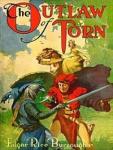
The Outlaw of Torn
Edgar Rice Burroughs
The story is set in 13th century England and concerns the fictitious outlaw Norman of Torn, who purportedly harried the country during the power struggle between King Henry III and Simon de Montfort. Norman is the supposed son of the Frenchman de Vac, once the king's fencing master, who has a grudge against his former employer and raises the boy to be a simple, brutal killing machine with a hatred of all things English. His intentions are partially subverted by a priest who befriends Norman and teaches him his letters and chivalry towards women.Otherwise, all goes according to plan. By 17, Norman is the best swordsman in all of England; by the age of 18, he has a large bounty on his head, and by the age of 19, he leads the largest band of thieves in all of England. None can catch or best him. In his hatred for the king he even becomes involved in the civil war, which turns the tide in favor of de Montfort. In another guise, that of Roger de Conde, he becomes involved with de Montfort's daughter Bertrade, defending her against her and her father's enemies. She notes in him a curious resemblance to the king's son and heir Prince Edward.Finally brought to bay in a confrontation with both King Henry and de Montfort, Norman is brought down by the treachery of de Vac, who appears to kill him, though at the cost of his own life. As de Vac dies, he reveals that Norman is in fact Richard, long-lost son of King Henry and Queen Eleanor and brother to Prince Edward. The fencing master had kidnapped the prince as a child to serve as the vehicle of his vengeance against the king. Luckily, Norman/Richard turns out not to be truly dead, surviving to be reconciled to his true father and attain the hand of Bertrade.